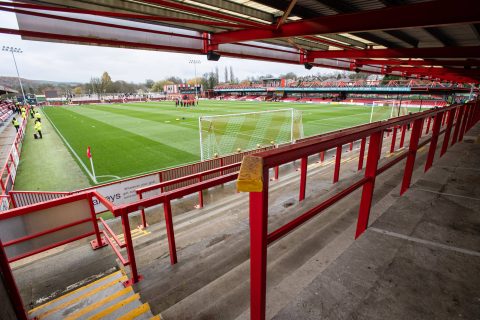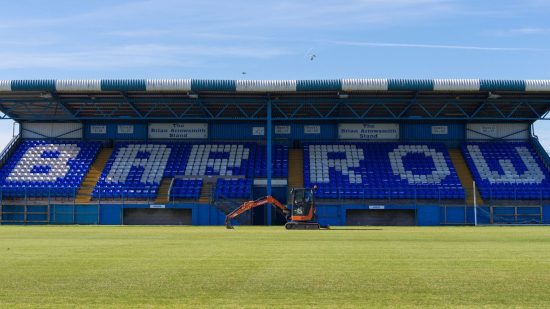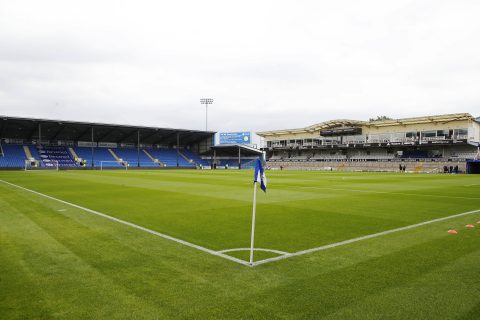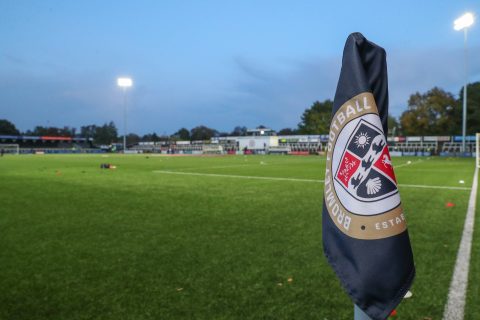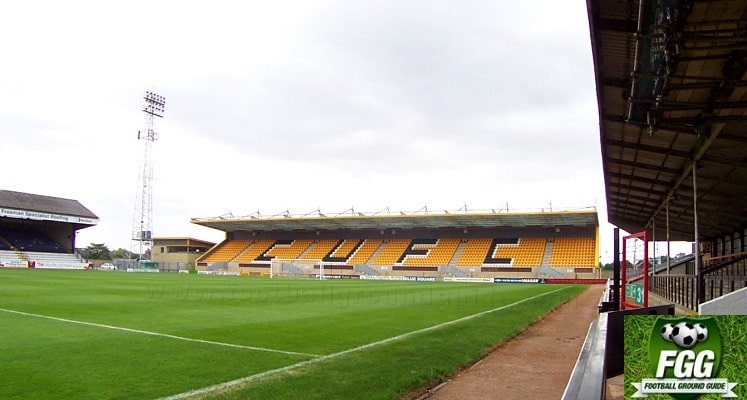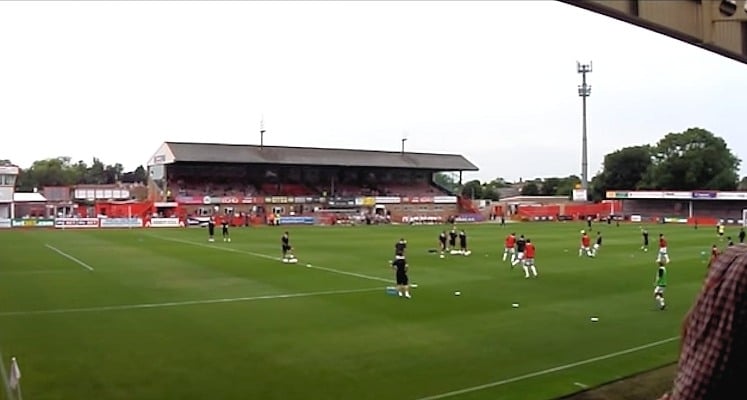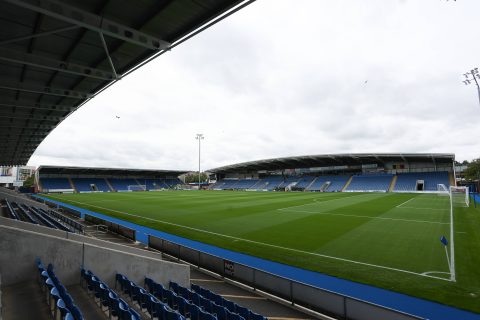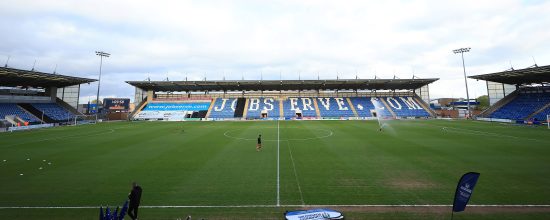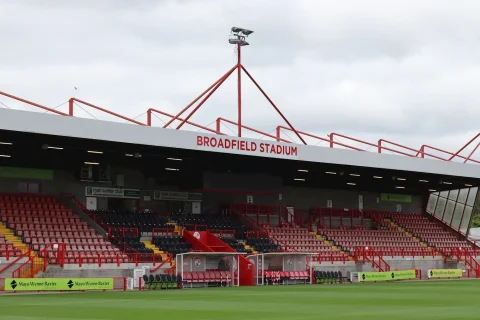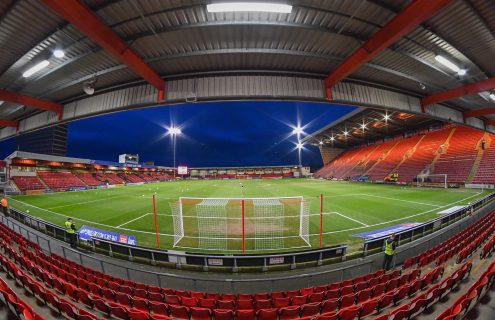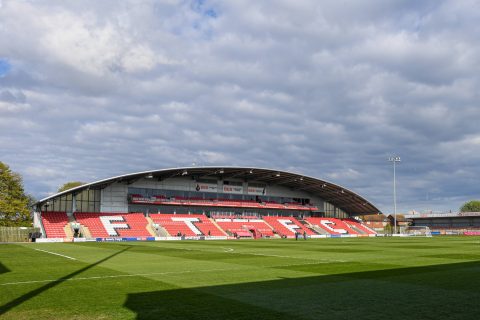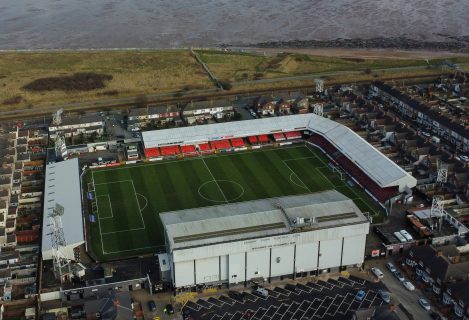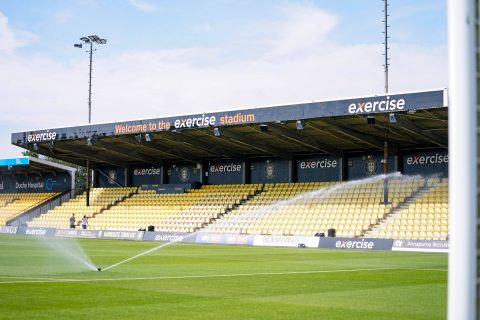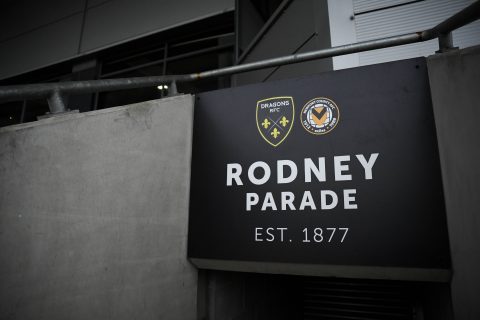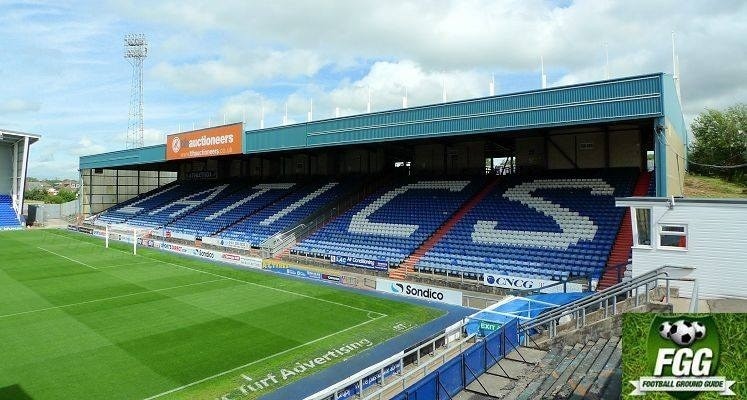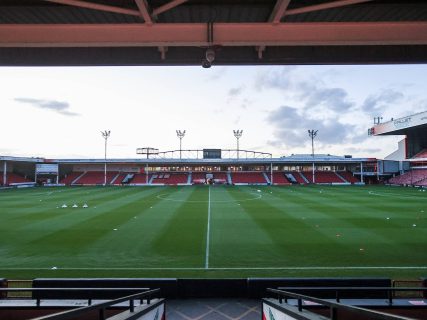League Two Stadiums – Overview
With League Two being the final frontier as far as professional football is concerned in England, it comes with the territory that the various stadiums in this league don’t quite have the financial backing as some of the larger stadiums in higher leagues.
However, a lack of financial backing doesn’t mean that the various League Two grounds are not full of character, and in fact, there are still a few clubs in League Two that have previously enjoyed Premier League football. This means that while they have now dropped a few divisions, more often than not, the current stadium has been purpose-built to accommodate top-flight football.
Either way, we’ve shortlisted some of our favourite League Two stadiums right here, and they are well worth a visit as and when you get the chance.
Meadow Lane – Notts County
Built in 1910, Meadow Lane was completely rebuilt during the early 1990s to become a modern stadium. The stadium has a seating capacity of 19,841, making it one of the biggest stadiums in League Two at the time. Outside the stadium, you can see statues of Notts County legends Jimmy Sirrel and Jack Wheeler.
Memorial Stadium – Bristol Rovers
While Memorial Stadium has a capacity of 12,300, these are mostly standing areas, which is far from what modern grounds have. However, Bristol Rovers are determined to change that, and plans to increase capacity to 16,500 with a majority of seated areas are in motion.
Boundary Park – Oldham Athletic
Boundary Park is an EFL stadium once again, and it is more than deserving of that status. The stadium is located on the edge of Manchester, hence the name, so it isn’t all that far from several other popular football stadiums, with Old Trafford arguably being the most well-known.
Boundary Park can squeeze in just over 13,500 fans when full, which means that it isn’t actually inside the top five for League Two, as far as capacity goes. But the reason we’ve included it is because it’s full of character, having been built over 100 years ago in 1904, and being one of the only stadiums (ever) to have changed the pitch into some plastic material.
Believe it or not, this pitch change allowed Oldham Athletic to burst into the top-flight, up until they had to change it back to a natural pitch to comply with league rules. And finally, if you are planning a visit to Boundary Park, make sure you pack a jacket, as it is officially listed as the coldest football stadium in England.
Stadium MK – MK Dons
MK Dons may well be one of the most unpopular football clubs in the United Kingdom, due to their controversial history, but Stadium MK is an impressive arena for a League Two side.
Although the stadium very rarely sells out, its facilities are at the level of a Premier League club. It’s not a surprise, therefore, that international football has been played here in the past and it could easily be expanded to 45,00o if there is ever enough demand.
County Ground – Swindon Town
Swindon Town play their matches at County Ground, one of the oldest stadiums in the country, opened in 1892. The stadium’s capacity has obviously changed over the years, from around 30,000 to 15,728, as it no longer has terraces with standing room only. This changed in the 1970s when the all-seated Arkell’s Stand was built.
Prenton Park – Tranmere Rovers
Lastly, Prenton Park is a stadium with a reasonably solid reputation all over the land. It’s probably not a great place to go and watch a football game if you are an away fan, mind you, as fans are packed into a stand referred to as the ‘cowshed’. Then again, it’s only 90 minutes that you’d need to ensure the cowshed for, and the stadium itself is actually pretty cool to enter.
With tall stands on all sides, completely enclosing the pitch, Prenton Park can build an intense atmosphere rather quickly, which makes it very exciting to watch a game of football in!
Since more than 16,000 fans can enter the ground to watch Tranmere Rovers in 2025, it’s towards the larger end of the scale too.
